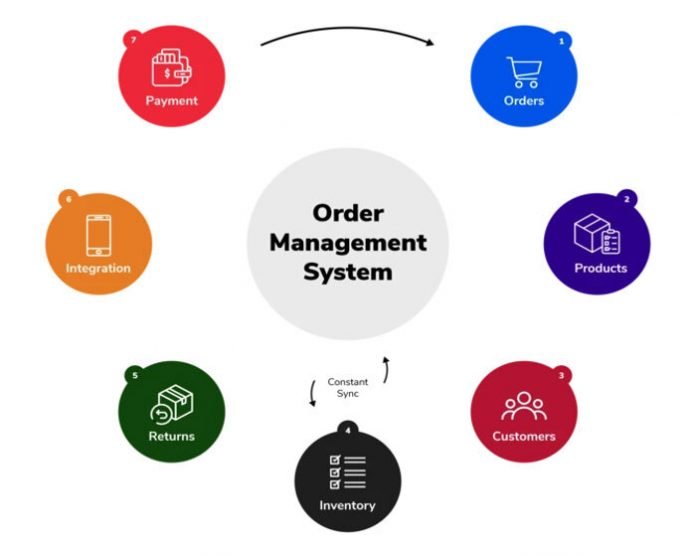Last Updated on June 10, 2023 by
Table of Contents
What is Ecommerce Order Management?
E-commerce order management is a background system for managing and fulfilling online orders. This includes everything from ordering and printing shipping labels to refund and subscription management.
Historically, customer order management relies on complex ERP and spreadsheets are updated manually. These outdated systems cannot support current brands and market vendors. In order to maintain competitiveness, brands need flexible, flexible and flexible solutions. They want functional technology that can be expanded to meet the need and change of business. This includes the command management system.
Order Management Systems (OMS) provides automation and integration – at all levels of order travel. This allows brands to provide continuous customer information on each channel. E-commerce order management systems allow operators to manage orders from multiple trading channels and exit multiple execution sites. Configures default between service providers and collects data from a single interface.
Real-time data forms the basis of an effective command management system. Sales data is now distributed through multiple marketing channels, technology platforms such as BigCommerce, and operating systems. With so much data, you can’t rely on static spreadsheets.
As businesses embrace multi-channel marketing, order management systems are essential.
How Does Ecommerce Order Management Work?
The goal of a command management system is to bring the product into the hands of the customer as efficiently as possible. Tracks the movement of each item according to the buyer’s order, from the moment it enters the vehicle until the moment it arrives at its door – and any subsequent returns.
1. The order fulfillment process.
Each company has its own way. This may be based on customers, murder sites, recovery plans, and providers. Although the processes may vary, most order filling processes include the following steps:
- The company takes orders from the customer.
- The company goes through the process with its own system.
- The customer will receive a notification that the company has received the order.
- Order is placed at a nearby warehouse or filling depot.
- The function selects the order on the shelf.
- The company prepares the shipping order and prints the shipping label.
- The company will ship the order.
- The buyer will be notified that the order is on track.
- The order is coming.
2. Order management systems facilitate order fulfillment
The function of the command management system is to make the termination process easy, cheap and automated. This provides these measures to reduce shipping costs and high costs, improve data quality and select and package as efficiently as possible. Most order management systems have simple functions to control the processing of your credit card and credit card. The most effective software combines advanced tools and e-commerce platforms to get acquainted with the way you do business.
When a customer pays for an item, the order management system can update the accounting system in a quick book, create an invoice, and print a shipping label. When an order is shipped, e-commerce management software can track the progress of the order in conjunction with a network company such as 3PL, FBA or FedEx or DHL. Once the order leaves the warehouse, your customer can track his progress until he arrives at his door. In most cases, this is coordinated by the OMS.
Read More: How to manage order fulfillment and logistics of eCommerce.
Reasons Why Ecommerce Order Management Systems are Important
Many e-commerce features cannot be developed without a command management system. Customers expect the ordering of the orderly, economical, and personalized order of yours. No mistake made by hand. Employees should focus on improving product information, not printing SKU orders, supplier phones, or documents.
1. Faster delivery
At a time when two-day delivery is becoming commonplace, companies need to find ways to place orders faster and faster. Fill the windows are shrinking. The automation of the order management system that I can give you here is the key.
When a customer places an order, the OMS can quickly select a warehouse or warehouse near the incoming order. Can use order details and order history to determine the order process. It then sends an auto-refill request to the warehouse so that its employees can process the order as soon as possible and deliver it through an exact network company.
2. Fewer mistakes
The command control system minimizes human error. Human error is time consuming and costly for businesses and is a major source of operating errors in many storage areas. The order management system can manage multiple channel lists and inventory adjustments, which may send you alerts if inventory levels are too low or too high and you need to complete. This prevents shipping delays, purchase fees and customer losses.
The order management system can improve quick and easy communication in many of the stock stores you have selected and packaged. Therefore, the delay is unlikely to be due to staff forgetfulness or improper ordering.
3. More scalability
An order management system can get you closer to your company. Unlike inheritance or personal systems, the increased need to replenish all resources does not go beyond a well-implemented management system. Its specially designed software will allow the company and you to maintain scale as you grow older.
4. Greater multi-channel opportunities
Today, e-commerce is not limited to advertising on the e-commerce company’s website. Signs should be clear everywhere. We live in a time of multi-media marketing, from websites to markets like Amazon and social networking sites like Facebook, Instagram, Pinterest and YouTube. If the order status comes from too many locations and the flow of customer traffic through broadcast platforms can be very difficult to track and process. This can affect performance speed and customer satisfaction.
Order management systems are able to collect and manage data, inventory profit coefficients, and route instructions between channels. This is one of the main advantages of an e-commerce management system in today’s e-commerce environment.




















